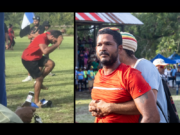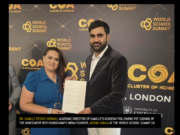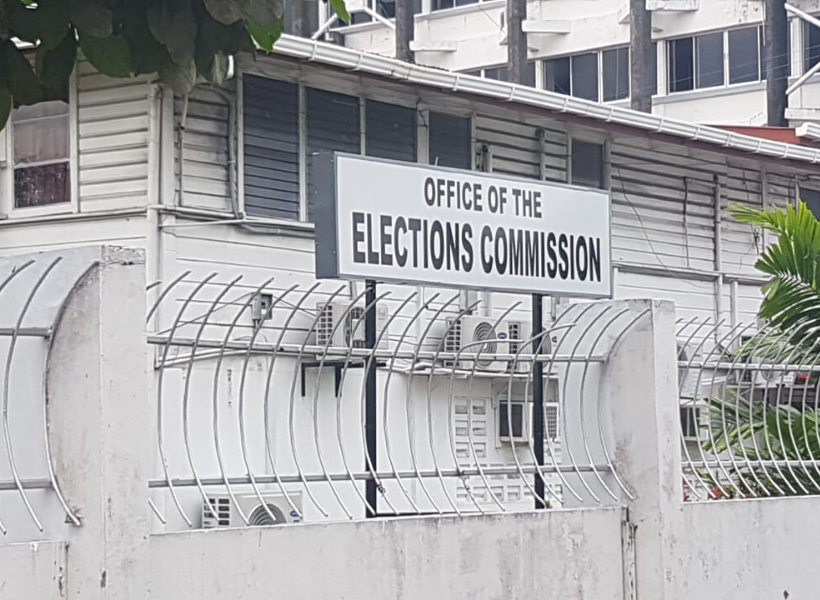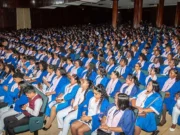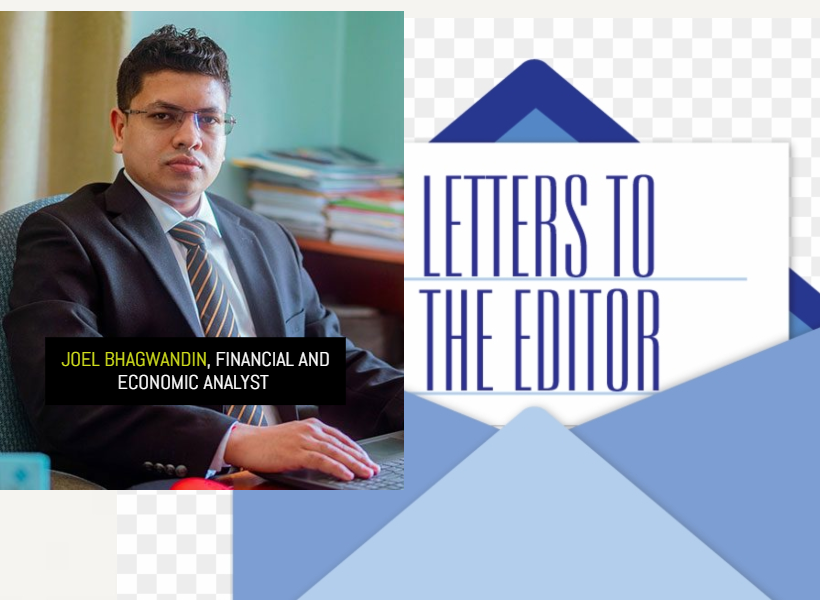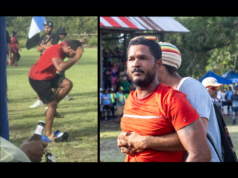Dear Editor,
Reference is made to Andre Brandli’s letters published in the Stabroek News editions of January 20, 2024 with the caption… “I have rarely read such sychophantic pamphlet praising a political leader in a country that considers itself a liberal democracy”, and on January 22, 2024 with the caption…”Readers of SN and myself will appreciate clarification of these ten questions on the ‘Jagdeo Doctrine’”.
Prof. Brandli unleashed an unmannerly attack against Dr. Randy Persaud, a noted professor of international relations who is now Advisor on International Affairs in the Office of the President. Brandli takes issue with Professor Persaud’s characterization of General Secretary Jagdeo’s call for a broadening of the base of the PPP.
It is of paramount importance to establish at the outset that Brandli’s attempt to sublty and cleverly infer that President, Dr. Mohamed Irfaan Ali and Vice President, Dr. Bharrat Jagdeo are misaligned, is a misguided inference on the part of Brandli. This is consistent with an observable strategy of the political opposition that they had attempted in the recent past, which failed simply because there is no truth to that notion. The truth, however, is that Dr. Brandli et.al., are profoundly ignorant on the subject of the politics of the PPP/C as a political entity and by extension the Guyanese political economy.
Vice President Dr. Bharrat Jagdeo is to President Ali, what the late Dr. Roger Luncheon was to former President Bharrat Jagdeo. So, there is no misalignment or any defacto leader as Brandli wants readers to believe. In other words, the role of the Vice President in the President Ali led PPP/C Government is consistent with the politics of the PPP/C since 1992. Moreover, Dr. Bharrat Jagdeo is the current General Secretary of the PPP/C, and it was in this context that Dr. Persaud’s essay was framed―in respect of broadening the base of the PPP/C as a political institution. This was taken completely out of context by Brandli, and at the time of writing, V. Bisram who joined the debate.
Be that as it may, there is absolutely nothing unusual about anyone highlighting the positives of a political leader in a praise worthy manner, especially in a democratic system. In many societies, political leaders are revered, which is not unsual. In fact, there are volumes of literature, academic journals and books written about Guyanese politicians, namely: the late Dr. Cheddie B. Jagan (PPP/C), L.F.S Burnham, and Desmond Hoyte.
Dr. Bharrat Jagdeo is indisputably the most accomplished politician in the region, and his track record of accomplishments, as illustrated hereunder, is incomparable. His Presidency of the Cooperative Republic of Guyana was in an era whereby the challenges of that time were vastly different in contrast to those that characterise the current environment. Equally, President Ali, in just three years has grown in popularity inexplicably rapidly, not only at home but globally. He has ascended to becoming a globally recognised and revered leader in just three years into his presidency. Indeed, his legacy and his accomplishments will be incomparable as well.
Turning now to his follow-up letter, Brandli posed 10 questions to Dr. Randy Persaud, eight of which were inconsequential and nonsensical. Notwithstanding, two out of the 10 questions, I would like to frontally address herein.
The first question I would like to address is (Q5) where he asked… “Could Dr. Randy Persaud identify five papers authored by Bharrat Jagdeo in economics, which were peer reviewed and published in journals of regional or international standing”? This question exposed Dr. Brandli’s fundamental illiteracy on these matters. In any profession, there are those who operate in academia and those who become practitioners. In this case, there are economists who are not practitioners, but work in academia conducting research and publishing in peer-reviewed journals, and there are practitioners who actually work in policymaking. Dr. Jagdeo is not an academic economist, he is an accomplished practicing economist of the highest order.
The second question I would like to address is (Q6) where he asked…”it is common knowledge that the PPP continued the Hoyte/Greenidge Economic Recovery Programme (ERP) after they took power in 1992. What are the differences between the ERP and the Jagdeo doctrine? Please explain to the readers”. Well, it is this author’s most esteemed privilege in taking the liberty to explain this to Brandli et.al., chiefly since there are some misconceptions about the ERP.
Strictly speaking, Brandli asked the wrong question. The questions that Brandli should really ask are how and why did the ERP came about? The ERP was engineered consequentially owing to the fact that it was the PNC Government under the leadership of L.F.S Burnham who bankrupted the economy, attributed to egregious macroeconomic policies and management altogether.
Following his demise, he was succeeded by the late Desmond Hoyte, by which time the economy was already bankrupt and needed to be rescued. Hoyte then had no choice but to immediately engage the International Monetary Fund (IMF) to assist with a bailout package. The IMF then ochestrated the ERP programme, which was imposed upon the Hoyte administration as the only option for the “commencement of economic recovery”, not full recovery.
The PNC along with their apologists such as Brandli have always hasten to take credit for the ERP. Nevertheless, the fact is that the ERP is nothing sophisticated or fantastic that requires exceptional brain power to put together. The ERP basically was a two-pronged strategy: (1) it imposed austerity measures, this was where the size of the public service shrank because that involved terminating public servants as part of the austerity measures (cutting costs). Further, this explained why free university education was no longer free as it was part of the cost cutting measures, inter alia, the ERP. And (2) the economy was a socially planned economy; more than 80% of the economy was owned and controlled by the State, hence the privatization of State assets became necessary. In other words, liquidation of State assets aimed at generating liquidity, which aided the commencement of a long journey of economic recovery. As such, the ERP could not have singularly achieved full economic recovery and stability.
With respect to the obtainment of full economic recovery and stability, this was where the “Jagdeo doctrine”, as Brandli puts it, was birthed following the 1992 elections which was won by the PPP/C. As the finance minister at that time, Dr. Jagdeo was instrumental in negotiating debt forgiveness from many of the country’s creditors. This played a pivotal role in the journey of economic recovery.
In 1994, the PPP/C government embarked on the formulation of a national development strategy, which was finalized in 1996. This strategy’s incremental implementation commenced immediately thereafter in 1997 to the present PPP/C Government. It is public knowledge that the 1996 national development strategy was led by Dr. Bharrat Jagdeo as the finance minister, which was followed by the poverty reduction strategy, followed by the national competiveness strategy, followed by the Low Carbon Development Strategy (LCDS) (2009), to the current expanded version of LCDS, all of which were led by Dr. Bharrat Jagdeo. So when Brandli asks Dr. Persaud to identify five peer reviewed academic papers, these were five (5) pragmatic policy papers, and implementable development strategies that were led by the Vice President, previously in his capacity as a former finance minister and former president.
By the time the former President Dr. Jagdeo completed his second term, the economy’s debt-to-GDP was reduced from 900% (1992) to less than 50% (2011), debt service to revenue ratio reduced from over 150% to 30%, inflation was reduced from 87% (1992) to 2% (2011), interest rates reduced from 30% (1992) to 11% (2011), exchange rates stablised at $200, foreign reserves stood at US$750 million representing 5 months import cover from zero in 1992, GDP moved from US$300 million to US$3.7 billion (2011), per capita income increased from US$500, to US$4,900.
From inheriting a bankrupt economy with practically zero savings in the bank, the former President Dr. Bharrat Jagdeo exited Government leaving a total of G$101 billion liquid cash in the Government Deposit Accounts in the banking sector at the end of 2011. This amount, when adjusted for present value (PV) is worth G$150 billion in today’s money. Resultantly, the sum total held in the Government Deposit Accounts together with the foreign reserve balance of US$750 million, would give rise to a total of G$252.5 billion (2011 value), with a PV of $348.5 billion. Of key note, this remarkable achievement was accomplished with zero oil money and zero oil discovery more than a decade ago under the stewardship of former President Dr. Bharrat Jagdeo. Furthermore, the political opposition consistently sought to destablise his government. To this end, a few key events of such were as follows:
• 1992–1997: there was a short period of street protests and violence having restored democracy, following which the economy took off (short period of stability).
• 1997–2001: prolonged street protests and disruption.
• 2002–2003: prison break, crime wave spiraled out of control and politically motivated disruptions.
• 2004–2008: unrests, politically motivated disruptions.
• 2008–2012: Lusignan, Lindo Creek, Bartica massacre, violence erupted when protestors blocked the Wismar Mckenzie bridge.
It is worth noting, too, that together with the foregoing political challenges, there was the adverse economic impact engendered by the 2005 floods (natural disaster) that resulted in a loss of 60% of GDP. Yet, in spite of all of the aforementioned challenges, former President Jagdeo managed to achieve all of the previously mentioned economic conditions and financial viability and stability.
Brandli’s attack on Dr. Persaud was unfortunate. He (Brandli) may have inadvertently set aside his supposedly scholastic faculties of thinking, failing to reflect for a moment that in so doing, he has exposed his inherent idiosyncratic weaknesses. Most ludicrously, nine out of every 10 letters authored by Dr. Brandli, he dedicates at least two elongated paragraphs about his academic credentials and experience. Only an inordinately insecure academic of Dr. Brandli’s stature would inadvertently diminish his academic standing to self aggrandizement, to the extent of vehemently craving validation of some sort from the powers that be.
Yours respectfully,
Joel Bhagwandin
